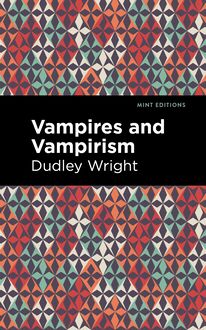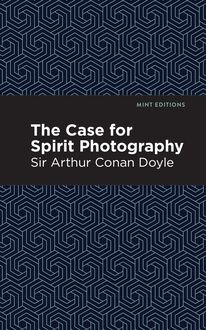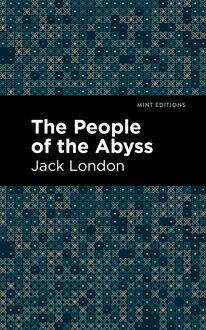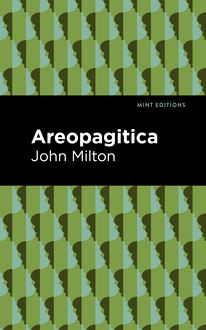-
 Univers
Univers
-
 Ebooks
Ebooks
-
 Livres audio
Livres audio
-
 Presse
Presse
-
 Podcasts
Podcasts
-
 BD
BD
-
 Documents
Documents
-
- Cours
- Révisions
- Ressources pédagogiques
- Sciences de l’éducation
- Manuels scolaires
- Langues
- Travaux de classe
- Annales de BEP
- Etudes supérieures
- Maternelle et primaire
- Fiches de lecture
- Orientation scolaire
- Méthodologie
- Corrigés de devoir
- Annales d’examens et concours
- Annales du bac
- Annales du brevet
- Rapports de stage
La lecture à portée de main
Vous pourrez modifier la taille du texte de cet ouvrage
Découvre YouScribe en t'inscrivant gratuitement
Je m'inscrisDécouvre YouScribe en t'inscrivant gratuitement
Je m'inscrisEn savoir plus
Vous pourrez modifier la taille du texte de cet ouvrage
En savoir plus

Description
Vampires and Vampirism (1914) is a work from another era, a time when belief and wonder led some to travel down pathways of knowledge in search of truth and terror, not knowing what they would find.
Written in response to an “awakened [popular] interest in supernormal phenomena” in the early twentieth century, Dudley Wright’s Vampires and Vampirism traces the history of vampirism around the world, from ancient Babylonia, Assyria, and Greece, to Great Britain, Germany, and Eastern Europe. Beginning with the question “What is a vampire?”, Wright seeks to first define the term before moving into an analysis of how belief in vampirism emerged from various and distant religious and cultural traditions. Each chapter uses a scholarly mix of ancient and modern sources to enlighten the reader, and the book culminates in a chapter titled “Fact or Fiction?”, which allows the reader to hear from believers and skeptics alike. The book includes harrowing personal accounts of outbreaks of vampirism in British India and Mexico, as well as a lengthy bibliography.
In a world where matters of occult nature, such as astrology, have reentered the popular consciousness, Vampires and Vampirism is sure to be of interest. It is also a fascinating document of a time when Europeans—faced with spiritual doubt and inspired by religious traditions and myths from the outer reaches of empire—sought to establish new systems of belief, new orders they hoped could replace those they feared were quickly becoming lost.
At times despicable, and always controversial, Dudley Wright was a tireless searcher whose life included conversions to Islam and Catholicism, forays into anti-Semitism—later retracted—and a deep, spiritual involvement with organizations dedicated to matters both visible and invisible, true and beyond belief.
With a beautifully designed cover and professionally typeset manuscript, this new edition of Dudley Wright’s Vampires and Vampirism is a classic of history and horror reimagined for modern readers.
Sujets
Informations
| Publié par | Mint Editions |
| Date de parution | 01 décembre 2020 |
| Nombre de lectures | 6 |
| EAN13 | 9781513266916 |
| Langue | English |
| Poids de l'ouvrage | 1 Mo |
Informations légales : prix de location à la page 0,0350€. Cette information est donnée uniquement à titre indicatif conformément à la législation en vigueur.
Extrait
Vampires and Vampirism
Dudley Wright
Vampires and Vampirism was first published in 1914.
This edition published by Mint Editions 2020.
ISBN 9781513266473 | E-ISBN 9781513266916
Published by Mint Editions®
minteditionbooks.com
Publishing Director: Jennifer Newens
Design & Production: Rachel Lopez Metzger
Typesetting: Westchester Publishing Services
C ONTENTS P REFACE 1. I NTRODUCTORY 2. E XCOMMUNICATION AND ITS P OWER 3. T HE V AMPIRE IN B ABYLONIA , A SSYRIA , AND G REECE 4. V AMPIRISM IN G REAT AND G REATER B RITAIN 5. V AMPIRISM IN G ERMANY AND S URROUNDING C OUNTRIES 6. V AMPIRISM IN H UNGARY , B AVARIA , AND S ILESIA 7. V AMPIRISM IN S ERVIA AND B ULGARIA 8. V AMPIRE B ELIEF IN R USSIA 9. M ISCELLANEA 10. L IVING V AMPIRES 11. T HE V AMPIRE IN L ITERATURE 12. F ACT OR F ICTION ? B IBLIOGRAPHY
P REFACE
T he awakened interest in supernormal phenomena which has taken place in recent years has included in its wake the absorbing subject of Vampirism. Yet there has not been any collection published of vampire stories which are common to all the five continents of the globe. The subject of vampirism is regarded more seriously to-day than it was even a decade since, and an attempt has been made in this volume to supply as far as possible all the instances which could be collected from the various countries. How far a certain amount of scientific truth may underlie even what may be regarded as the most extravagant stories must necessarily be, for the present, at any rate, an open question; but he would indeed be a bold man who would permit his scepticism as to the objective existence of vampires in the past or the possibility of vampirism in the future to extend to a categorical denial. If this collection of stories helps, even in a slight degree, to the elucidation of the problem, the book will not have been written in vain.
D UDLEY W RIGHT .
A UTHORS ’ C LUB , 2 W HITEHALL C OURT , S.W., 1st September, 1914 .
Chapter 1
I NTRODUCTORY
W hat is a vampire? The definition given in Webster’s International Dictionary is: “A blood-sucking ghost or re-animated body of a dead person; a soul or re-animated body of a dead person believed to come from the grave and wander about by night sucking the blood of persons asleep, causing their death.”
Whitney’s Century Dictionary says that a vampire is: “A kind of spectral body which, according to a superstition existing among the Slavic and other races on the Lower Danube, leaves the grave during the night and maintains a semblance of life by sucking the warm blood of living men and women while they are asleep. Dead wizards, werwolves, heretics, and other outcasts become vampires, as do also the illegitimate offspring of parents themselves illegitimate, and anyone killed by a vampire.”
According to the Encyclopædia Britannica : “The persons who turn vampires are generally wizards, suicides, and those who come to a violent end or have been cursed by their parents or by the Church. But anyone may become a vampire if an animal (especially a cat) leaps over the corpse or a bird flies over it.”
Among the specialists, the writers upon vampire lore and legend, two definitions may be quoted:—Hurst, who says that: “A vampyr is a dead body which continues to live in the grave; which it leaves, however, by night, for the purpose of sucking the blood of the living, whereby it is nourished and preserved in good condition, instead of becoming decomposed like other dead bodies”; and Scoffern, who wrote: “The best definition I can give of a vampire is a living mischievous and murderous dead body. A living dead body! The words are idle, contradictory, incomprehensible, but so are vampires.”
“Vampires,” says the learned Zopfius, “come out of their graves in the night time, rush upon people sleeping in their beds, suck out all their blood and destroy them. They attack men, women, and children, sparing neither age nor sex. Those who are under the malignity of their influence complain of suffocation and a total deficiency of spirits, after which they soon expire. Some of them being asked at the point of death what is the matter with them, their answer is that such persons lately dead rise to torment them.”
Not all vampires, however, are, or were, suckers of blood. Some, according to the records, despatched their victims by inflicting upon them contagious diseases, or strangling them without drawing blood, or causing their speedy or retarded death by various other means.
Messrs Skeat and Blagden, in Pagan Races of the Malay Peninsula (vol. i. p. 473), state that “a vampire, according to the view of Sakai of Perak, is not a demon—even though it is incidentally so-called—but a being of flesh and blood,” and support this view by the statement that the vampire cannot pass through walls and hedges.
The word vampire (Dutch, vampyr ; Polish, wampior or upior ; Slownik, upir ; Ukraine, upeer ) is held by Skeat to be derived from the Servian wampira . The Russians, Morlacchians, inhabitants of Montenegro, Bohemians, Servians, Arnauts, both of Hydra and Albania, know the vampire under the name of wukodalak , vurkulaka , or vrykolaka , a word which means “wolf-fairy,” and is thought by some to be derived from the Greek. In Crete, where Slavonic influence has not been felt, the vampire is known by the name of katakhaná . Vampire lore is, in general, confined to stories of resuscitated corpses of male human beings, though amongst the Malays a penangglan , or vampire, is a living witch, who can be killed if she can be caught in the act of witchery. She is especially feared in houses where a birth has taken place, and it is the custom to hang up a bunch of thistle in order to catch her. She is said to keep vinegar at home to aid her in re-entering her own body. In the Malay Peninsula, parts of Polynesia and the neighbouring districts, the vampire is conceived as a head with entrails attached, which comes forth to suck the blood of living human beings. In Transylvania, the belief prevails that every person killed by a nosferatu (vampire) becomes in turn a vampire, and will continue to suck the blood of other innocent people until the evil spirit has been exorcised, either by opening the grave of the suspected person and driving a stake through the corpse, or firing a pistol-shot into the coffin. In very obstinate cases it is further recommended to cut off the head, fill the mouth with garlic, and then replace the head in its proper place in the coffin; or else to extract the heart and burn it, and strew the ashes over the grave.
The murony of the Wallachians not only sucks blood, but also possesses the power of assuming a variety of shapes, as, for instance, those of a cat, dog, flea, or spider; in consequence of which the ordinary evidence of death caused by the attack of a vampire, viz. the mark of a bite in the back of the neck, is not considered indispensable. The Wallachians have a very great fear of sudden death, greater perhaps than any other people, for they attribute sudden death to the attack of a vampire, and believe that anyone destroyed by a vampire must become a vampire, and that no power can save him from this fate. A similar belief obtains in Northern Albania, where it is also held that a wandering spirit has power to enter the body of any individual guilty of undetected crime, and that such obsession forms part of his punishment.
Some writers have ascribed the origin of the belief in vampires to Greek Christianity, but there are traces of the superstition and belief at a considerably earlier date than this. In the opinion of the anthropologist Tylor, “the shortest way of treating the belief is to refer it directly to the principles of savage animism. We shall see that most of its details fall into their places at once, and that vampires are not mere creations of groundless fancy, but causes conceived in spiritual form to account for specific facts of wasting disease.” It is more than probable that the practice of offering up living animals as sacrifices to satisfy the thirst of departed human beings, combined with the ideas of the Platonist and the teachings of the learned Jew, Isaac Arbanel, who maintained that before the soul can be loosed from the fetters of the flesh it must lie some months with it in the grave, may have influenced the belief and assisted its development. Vampirism found a place in Babylonian belief and in the folk-lore and traditions of many countries of the Near East. The belief was quite common in Arabia, although there is no trace of it there in pre-Christian times. The earliest references to vampires are found in Chaldean and Assyrian tablets. Later, the pagan Romans gave their adherence to the belief that the dead bodies of certain people could be allured from their graves by sorcerers, unless the bodies had actually undergone decomposition, and that the only means of effectually preventing such “resurrections” was by cremating the remains. In Grecian lore there are many wonderful stories of the dead rising from their graves and feasting upon the blood of the young and beautiful. From Greece and Rome the superstition spread throughout Austria, Hungary, Lorraine, Poland, Roumania, Iceland, and even to the British Isles, reaching its height in the period from 1723 to 1735, when a vampire fever or epidemic broke out in the south-east of Europe, particularly in Hungary and Servia. The belief in vampires even spread to Africa, where the Kaffirs held that bad men alone live a second time and try to kill the living by night. According to a local superstition of the Lesbians, the unquiet ghost of the Virgin Gello used to haunt their island, and was supposed to cause the deaths of young children.
Various devices have been resorted to in different countries at the time of burial, in the belief that the dead could thus be prevented from returning to earth-life. In some instances, e.g. among the Wallachians,
-
 Univers
Univers
-
 Ebooks
Ebooks
-
 Livres audio
Livres audio
-
 Presse
Presse
-
 Podcasts
Podcasts
-
 BD
BD
-
 Documents
Documents
-
Jeunesse
-
Littérature
-
Ressources professionnelles
-
Santé et bien-être
-
Savoirs
-
Education
-
Loisirs et hobbies
-
Art, musique et cinéma
-
Actualité et débat de société
-
Jeunesse
-
Littérature
-
Ressources professionnelles
-
Santé et bien-être
-
Savoirs
-
Education
-
Loisirs et hobbies
-
Art, musique et cinéma
-
Actualité et débat de société
-
Actualités
-
Lifestyle
-
Presse jeunesse
-
Presse professionnelle
-
Pratique
-
Presse sportive
-
Presse internationale
-
Culture & Médias
-
Action et Aventures
-
Science-fiction et Fantasy
-
Société
-
Jeunesse
-
Littérature
-
Ressources professionnelles
-
Santé et bien-être
-
Savoirs
-
Education
-
Loisirs et hobbies
-
Art, musique et cinéma
-
Actualité et débat de société
- Cours
- Révisions
- Ressources pédagogiques
- Sciences de l’éducation
- Manuels scolaires
- Langues
- Travaux de classe
- Annales de BEP
- Etudes supérieures
- Maternelle et primaire
- Fiches de lecture
- Orientation scolaire
- Méthodologie
- Corrigés de devoir
- Annales d’examens et concours
- Annales du bac
- Annales du brevet
- Rapports de stage




















